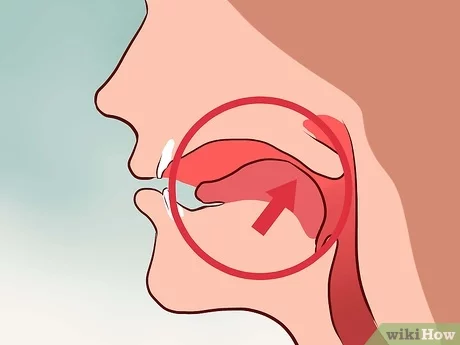How to Throw Your Voice: A Comprehensive Guide
Throwing your voice is a fascinating skill often associated with ventriloquism. While the term suggests that one can project their voice to sound as if it is coming from a different location, the reality is that this is an illusion created through specific techniques and practices. This article will explore the fundamentals of voice throwing, techniques, and tips to master this art.
Understanding the Concept of Voice Throwing
The concept of “throwing your voice” is primarily an illusion. It involves the ability to speak without moving your lips and creating the perception that the sound is emanating from elsewhere. This skill is commonly associated with ventriloquists, who use various techniques to entertain audiences.
The Science Behind Voice Perception
When we hear a sound, our brains attempt to locate its source. This process involves several factors, including:
- Sound Directionality: The human ear can detect slight differences in the time it takes for sound to reach each ear, allowing us to pinpoint the direction of sounds.
- Visual Cues: Our brains often rely on visual information to interpret sounds. For instance, if we see a person speaking, we naturally associate the sound with that person.
- Misdirection: To create the illusion of voice throwing, a ventriloquist must skillfully misdirect the audience’s attention away from themselves.
Techniques for Throwing Your Voice
- Lip Control: The foundation of voice throwing is the ability to speak without moving your lips. This requires practice and control over your facial muscles.
- Voice Modulation: Changing your voice to sound different from your own is essential. This can involve altering pitch, tone, and speed to create distinct characters.
- Misdirection: Use props or puppets to divert attention. The audience should believe the sound is coming from the puppet rather than the ventriloquist.
- Practice: Like any skill, mastering voice throwing takes time and consistent practice. Start with simple phrases and gradually increase complexity.
- Breath Control: Proper breath control is crucial for projecting your voice. Practice breathing techniques to enhance your vocal projection.
Step-by-Step Guide to Throwing Your Voice
Step 1: Master Lip Control
- Exercise: Place a finger over your lips as if signaling someone to be quiet. Try to speak without moving your lips. This helps develop the necessary control.
Step 2: Develop a Distinct Voice
- Choose a Character: Decide on a character or persona for your voice. This could be a puppet, an animal, or a fictional character.
- Practice Different Voices: Experiment with various pitches and tones until you find a voice that feels distinct from your own.
Step 3: Use Misdirection
- Props: Utilize puppets or objects to create the illusion. Make sure your movements align with the character you are portraying.
- Engagement: Interact with your prop as if it is alive. This enhances the believability of the illusion.
Step 4: Combine Techniques
- Voice Projection: Practice projecting your voice while maintaining lip control. This can be done by speaking to the back of the room or using a microphone.
- Breath Control: Focus on taking deep breaths to sustain your voice without straining.
Tips for Successful Voice Throwing
- Watch Professionals: Study performances by skilled ventriloquists to understand their techniques and styles.
- Record Yourself: Listening to recordings of your practice can help identify areas for improvement.
- Join a Class: Consider taking a ventriloquism class or workshop to receive guidance from experienced instructors.
- Stay Relaxed: Tension can hinder your ability to control your voice. Practice relaxation techniques to keep your body and voice relaxed.
Common Misconceptions
- You Can Actually Throw Your Voice: The term is misleading; you cannot physically throw your voice. It is an illusion created through skillful techniques.
- Only Ventriloquists Can Do It: While ventriloquists are known for this skill, anyone can learn to throw their voice with practice and dedication.
- It’s All About the Voice: While voice modulation is important, misdirection and performance are equally crucial in creating the illusion.
FAQ Section
Q1: Is throwing your voice a real phenomenon?A1: No, throwing your voice is an illusion. It involves techniques that create the perception that the sound is coming from a different source.
Q2: Can anyone learn to throw their voice?A2: Yes, with practice and dedication, anyone can learn to throw their voice. It requires mastering lip control, voice modulation, and misdirection.
Q3: How long does it take to learn?A3: The time it takes to learn varies by individual. Regular practice can lead to noticeable improvements within weeks.
Q4: Do I need a puppet to throw my voice?A4: While using a puppet can enhance the illusion, it is not necessary. You can create the effect using props or by simply directing your voice.
Q5: Are there any health risks associated with voice throwing?A5: If done incorrectly, voice throwing can strain your vocal cords. It’s essential to practice proper techniques and take breaks as needed.
Conclusion
Throwing your voice is a captivating skill that combines vocal control, creativity, and performance. By understanding the science behind sound perception and practicing the necessary techniques, anyone can learn to create the illusion of voice throwing. Whether for entertainment or personal enjoyment, mastering this art can be a rewarding experience.
Comparison Table of Voice Throwing Techniques
| Technique | Description | Importance |
|---|---|---|
| Lip Control | Speaking without moving lips. | Essential for the illusion. |
| Voice Modulation | Changing pitch and tone to create distinct characters. | Adds depth to performance. |
| Misdirection | Using props or puppets to divert attention. | Crucial for believability. |
| Breath Control | Managing breath to project voice effectively. | Prevents strain and enhances projection. |
| Practice | Regularly rehearsing techniques to improve skills. | Key to mastering voice throwing. |
For more detailed information about ventriloquism and voice techniques, you can visit the Wikipedia page on Ventriloquism.
Read more about it:https://greyhoundsverdevalley.com/what-is-mic-monitoring/



